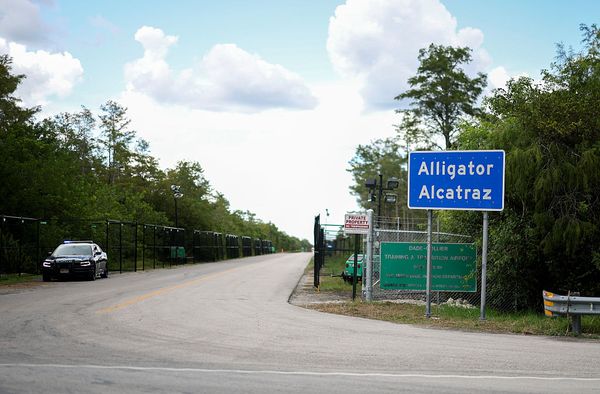Two years after Hamas' Oct. 7 attacks, the war in Gaza is closer than ever to its end, and the region will never be the same.
Why it matters: The war started with the biggest massacre of Jews since the Holocaust and continued with the worst killing and displacement of Palestinians since the Nakba of 1948.
- Even if President Trump's peace push proves successful, the human tragedy and the geopolitical shifts will be felt for generations.
The big picture: Israel has inflicted enormous blows on its adversaries since Oct. 7, but its global standing has dramatically deteriorated.
- Support for Palestinian rights and statehood have greatly increased, with more than a dozen additional countries recognizing Palestine, but Palestinians in Gaza are displaced and hungry while Palestinians in the occupied West Bank face growing repression.
- In the U.S., the war split the Democratic base in 2024 and sparked the campus protests that the Trump administration is now citing to pressure universities.
State of play: Nearly 2,000 Israelis have been killed in the war across its various fronts, according to the Israeli government.
- More than 67,000 Palestinians have been killed in Gaza, according to the Hamas-controlled Health Ministry.
- Several thousand more people have been killed in the West Bank, Lebanon, Iran, Syria and Yemen. Israel has struck eight countries and territories in total since Oct. 7.
- Out of 255 hostages taken by Hamas, 148 were returned alive and the bodies of 59 were retrieved. Twenty of the remaining 48 hostages are believed to be alive.
How it happened: The war in Gaza quickly evolved into a regional war that destabilized and reshaped the entire Middle East.
- In Iran, 12 days of bombing by Israel, with U.S. participation, dramatically damaged the nuclear program and shook the regime.
- In Lebanon, Israel assassinated Hezbollah's leader, killed its top commanders and significantly diminished its political power. Hezbollah's decline helped a U.S.-friendly president take power after a two-year deadlock.
- In Syria, the Assad regime — left vulnerable by the weakening of the pro-Iran axis — fell to rebels after 50 years in power. The new government is holding direct talks with Israel for the first time in 25 years.
- In Iraq, pro-Iranian Shiite militias effectively stood down under military threats from Israel and political pressure from the U.S.
- But in Yemen, the Houthi rebels withstood a months-long U.S. air campaign and proved themselves a formidable threat for Israel.
- In Qatar, a failed Israeli airstrike against Hamas leaders united the Gulf states in pressing for an end to the war — and in outrage at Israel. Out of the chaos, Trump's peace plan was born.
What they're saying: "Israel lost a lot of support in the world. Now I am gonna get all that support back," Trump told Axios last week.
- Trump is the only major world leader still standing beside Israeli Prime Minister Benjamin Netanyahu — and even he told Axios that Netanyahu "took it very far" in his prosecution of the war.
- For months, polls in Israel have shown clear majorities wanting the war to end and the hostages freed, even if it meant Hamas survived in some form.
- The polls also indicate most Israelis want Netanyahu — who has refused to apologize for pre-war security failures or to allow an independent inquiry — to step down. Netanyahu rejects accusations he continued the war for his own political survival.
The other side: Gaza is devastated and mostly uninhabitable, with the entire population of 2 million people displaced. Almost all infrastructure has been destroyed. The majority of homes have been systematically flattened by the Israeli military.
- While a recent aid surge appears to have stopped the spread of famine, the humanitarian crisis remains one of the worst in the world.
- Hamas hasn't been destroyed, but it has been militarily defeated. The group lost most of its well-trained militants and heavy weapons. Its ability to conduct "another Oct. 7" is nonexistent.
- Hamas' popularity and public legitimacy in Gaza appear to have plunged. The group is isolated in the Arab world. For the first time, it's ready to give up power in Gaza and even partially disarm.
Zoom in: One of the motivations Hamas leader Yahya Sinwar had for launching the Oct. 7 attacks was to derail the normalization process between Israel and the Arab world, and especially a potential peace deal between Israel and Saudi Arabia.
- He succeeded. Saudi Arabia has adopted a much stronger pro-Palestinian position, and no Arab leader has dared to be seen in public with Netanyahu.
On the other hand, the Trump plan for ending the war creates an opportunity to return to the normalization path.
- It calls for a credible path to Palestinian statehood and a key Saudi condition for normalization with Israel, and it's brought eight Muslim countries into the peace process.
- Meanwhile, the hostility around the world toward Israel, Israelis and Jews is at an all-time high. Trump told Axios in one recent interview that he's concerned both by people glorifying Oct. 7 and by others denying it happened.
- The Israeli and Palestinian societies are deeply traumatized by the war, and big parts of both have been radicalized by it. Hope for a lasting peace, or any process of near-term reconciliation, appears low on both sides.
What to watch: All eyes turn to Egypt and the indirect peace talks happening there this week between Israel and Hamas.
- For any rebuilding to begin, the war must end.







